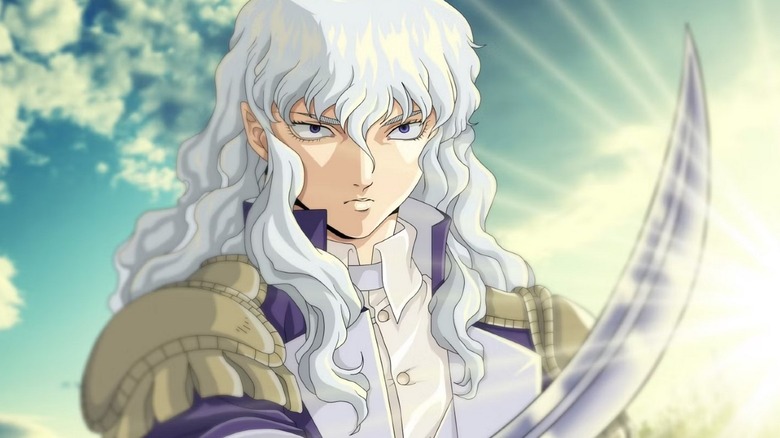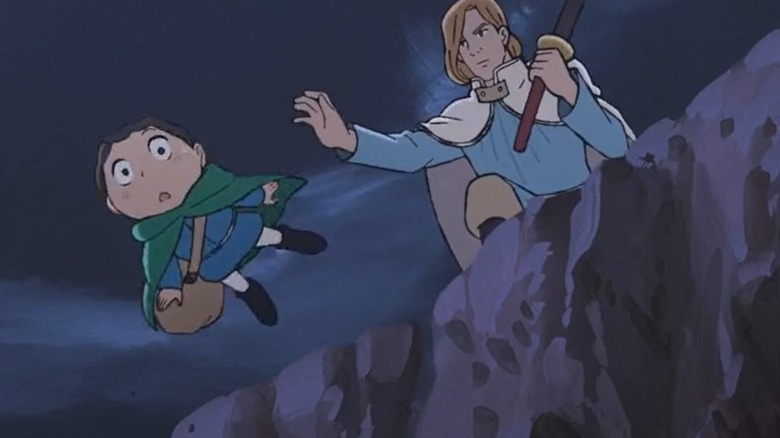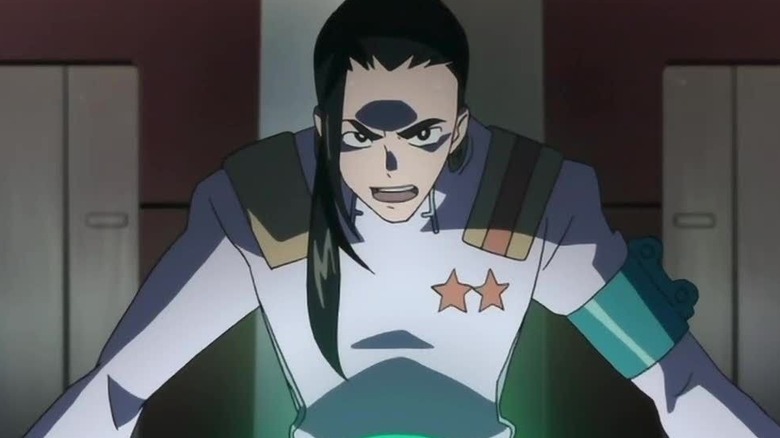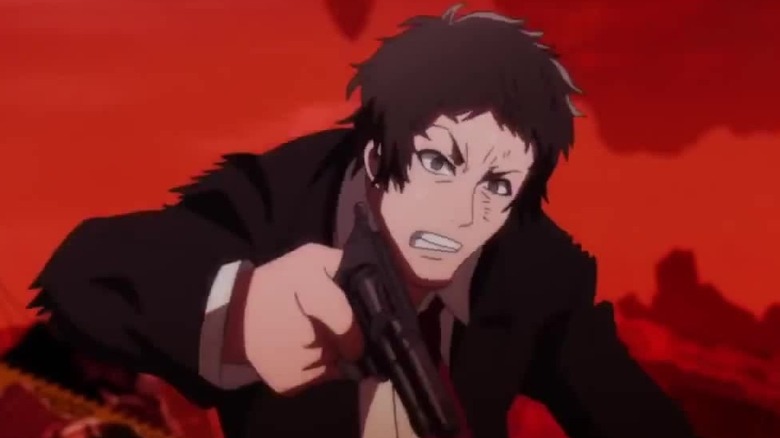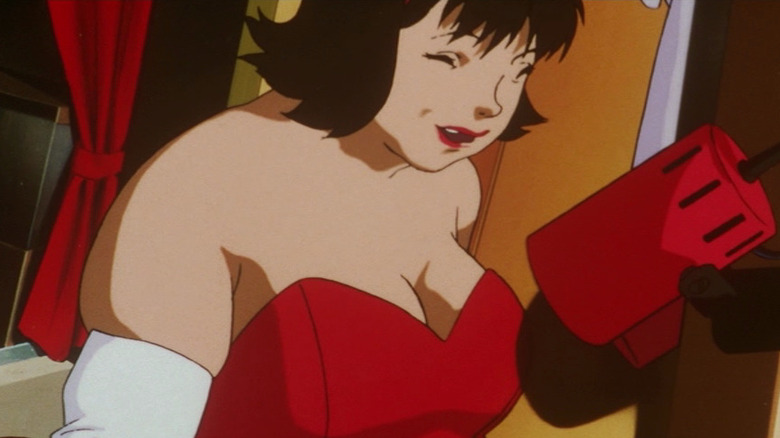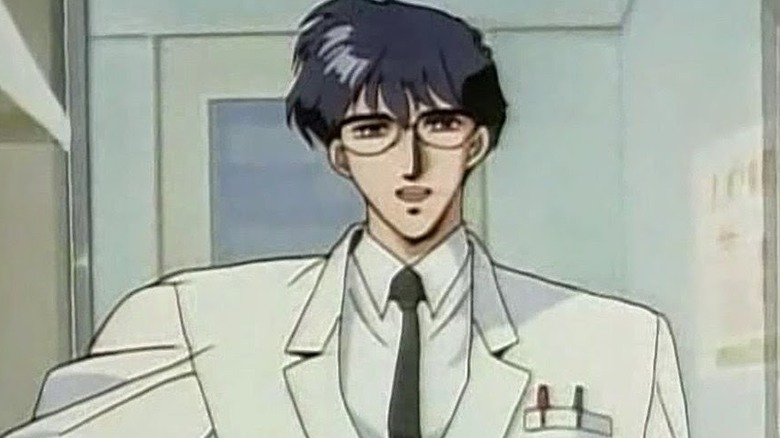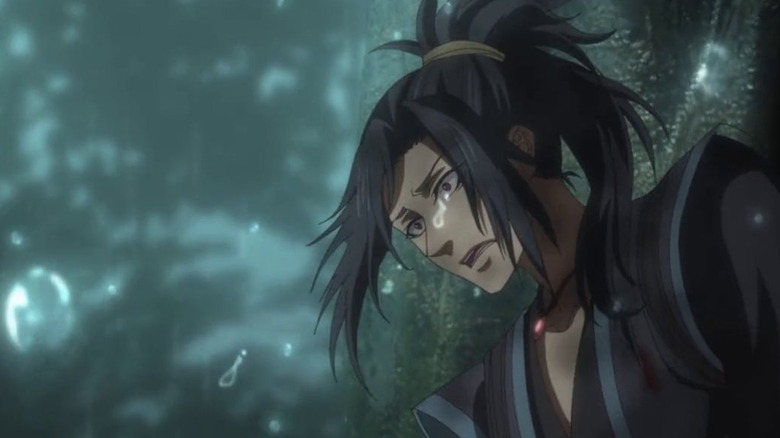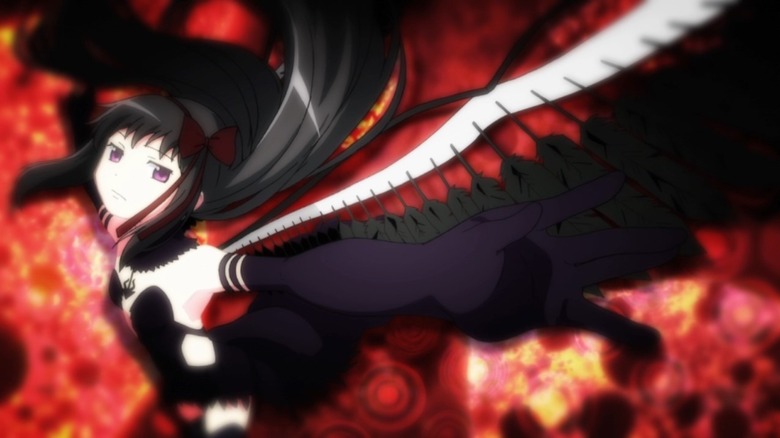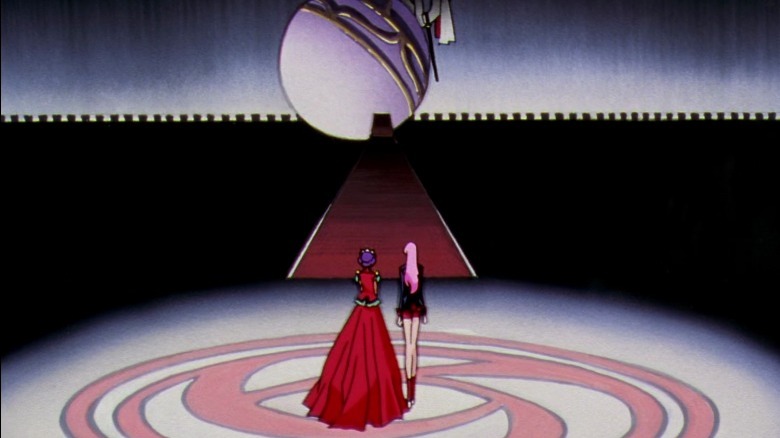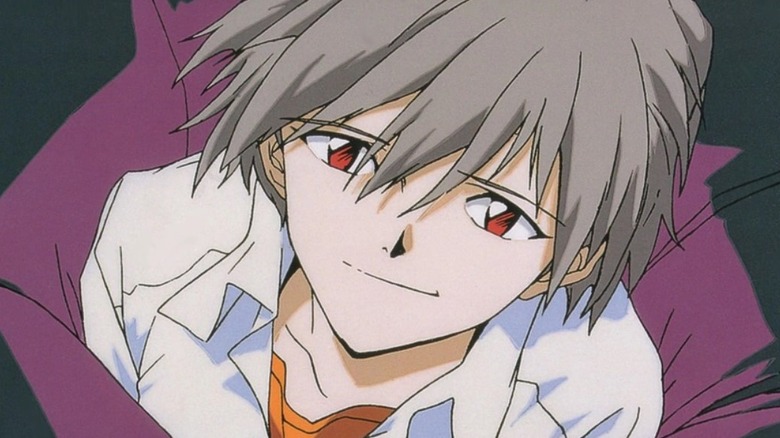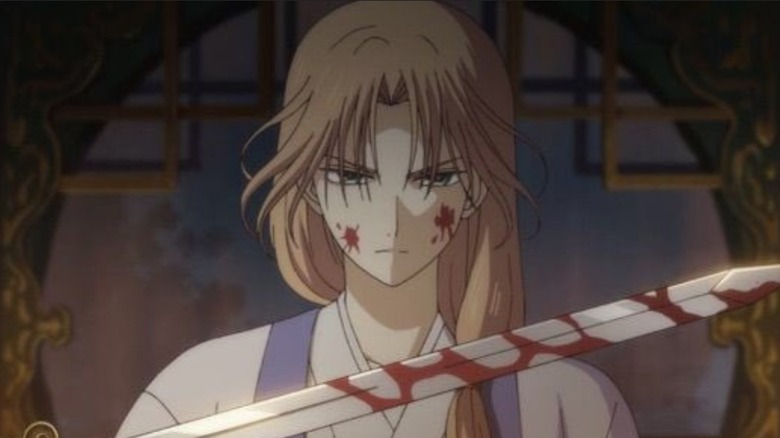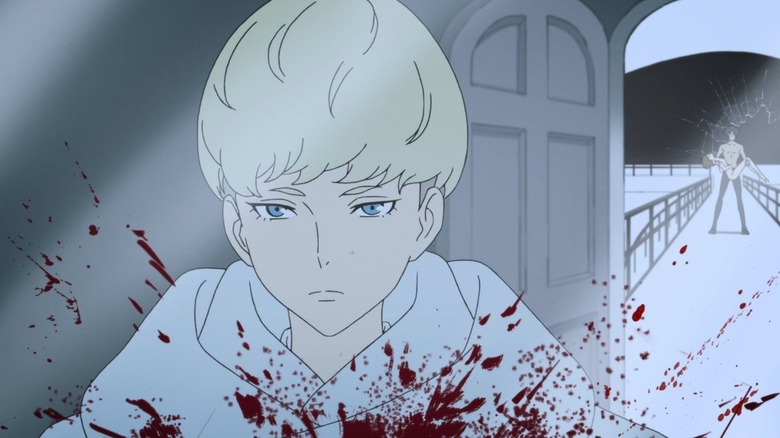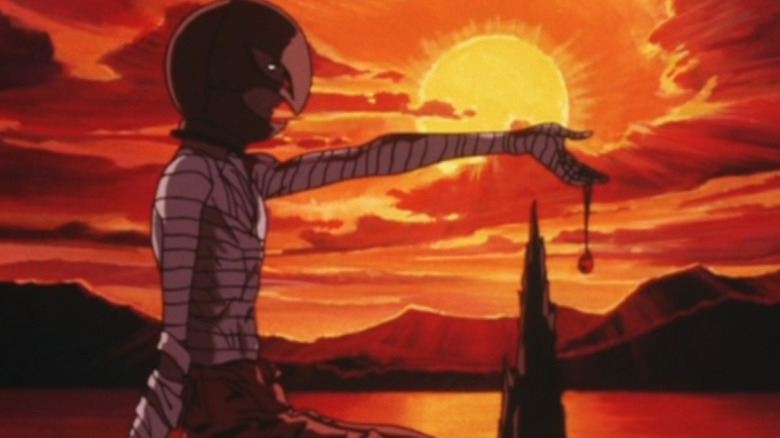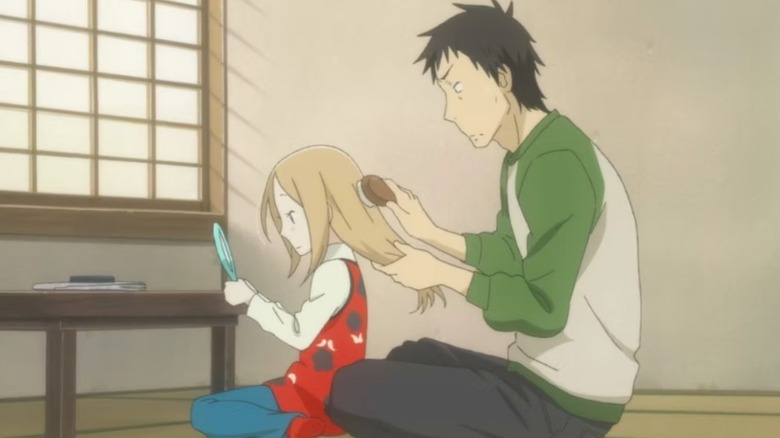The Top 13 Anime Betrayals Of All Time, Ranked
Seemingly every site on the internet has written a "Top Anime Betrayals" article. It has its own meme and everything. Obviously, we're no better, but it makes sense that people keep coming back to the subject. "Betrayal" covers a lot of ground. Depending on the writer's frame of reference and what hits them, personally, in the guts, there are a huge number of ways to approach the subject. Which characters are you the most emotionally invested in? Which show did you see at a formative age? Have you watched much anime beyond big-budget Shonen Jump adaptations?
So, let's give up on finding the one true list; in the end, this sort of thing is subjective anyway. Instead, we present you with 13 gut-punching betrayals that changed the way we looked at these stories, reshaped the courses of their respective narratives, or affected other titles for years to come. Just prepare yourself for spoilers, since many of these betrayals serve as pivotal plot twists. Again: big spoilers ahead!
14. Domas pushes Bojji into a volcano (Ranking of Kings)
While "Demon Slayer" lead Tanjiro Kamada has done a lot to showcase the importance of empathy, no shonen anime protagonist has revived the appeal of the innocent, good-hearted hero quite like Prince Bojji. Born deaf, unable to speak, and with great agility but little physical strength, Bojji endures mockery growing up and is assumed to be unfit to inherit the throne.
That's why it's such a blow when his sword-fighting instructor Domas, the only one who had Bojji's back during those hard years, pushes the young prince into a deep pit during a journey ostensibly designed to prove Bojji's worth. It might not stick — in fact, the deed puts Bojji closer to where he needs to go next — but the hurt of that betrayal lingers as the story progresses. More importantly, the fact that Domas himself regrets his actions immediately doesn't sweep what happened under the rug. It's a moving subplot, one that recognizes that forgiveness, even if given, doesn't restore lost trust.
13. Rossiu lives up to his namesake (Gurren Lagann)
"Gurren Lagann" is mainly an anime about big, passionate feelings and how fiery determination won't let a little thing like logic stand in its way. Maybe that's why Rossiu Adai makes a perfect antagonist. During the mid-series time-skip, he becomes Simon's second-in-command, and the two often butt heads. Not long after, he pins the blame for rising Anti-Spiral activity on Simon and takes the opportunity to overthrow him.
Rossiu's name might be a play on the philosopher Jean-Jacque Rosseau, but his actions as leader fall increasingly under the banner of utilitarianism, as his attempts to ensure humanity's survival against the Anti-Spirals allow for an increasing number of acceptable casualties. His name becomes a beacon for his ideal self and the revolutionary spirit the show wants to embody, one in which the heroes tear down oppressive hierarchies by punching them in the face. It's one he finds his way back to in the end.
12. Adachi was behind it all (Persona 4)
Fans of mysteries are savvy enough to be suspicious of a character who's too friendly, or who doesn't seem to have much to do with pushing the plot forward. In hindsight, it might make sense that the bumbling assistant detective who shows up to family dinners with the protagonist's uncle, opines about cabbage at the local grocery store, and is suspiciously unhelpful was the killer all along, but the execution of this reveal in "Persona 4" still hits like a truck.
Tohru Adachi's confession isn't just an answer to the "whodunnit." It's a total persona shift that replaces a friendly face with that of a borderline-incel who spits non-stop misogyny. Look, Adachi became a cop just so that he'd be allowed to carry a gun. That should tell you everything you need to know. For a story known to be divisively hit-or-miss in its tackling of social issues, this is one time when "Persona 4" is right on target.
11. Rumi convinces herself she's Mima (Perfect Blue)
Satoshi Kon's best-known film is a surreal exploration of the boundaries between the public and private self, framed through the idol industry and the rise of the internet. Mima Kirigoe's decision to move from idol work to acting is marked by trauma: an acting debut that includes a graphic sexual assault scene, a stalker who labels her "dirty" because of her risqué career choices, and visions of a sinister doppelganger. Once her collaborators start turning up dead, it's easy to see why Mima begins to question her grip on reality and her culpability in the crimes.
But, as it turns out, the doppel-Mima is very real; in fact, it's Mima's manager and steadfast supporter, Rumi. The reveal is a snarl of shock and eeriness, somewhat stunted by the fat-shaming implicit in seeing Rumi wear the much-smaller Mima's stage costume. However, it's also difficult to shake the sadness of seeing Mima's closest friend become lost to her, completely consumed by the constructed image that Mima has spent the entire movie trying to escape.
If you or anyone you know has been a victim of sexual assault, help is available. Visit the Rape, Abuse & Incest National Network website or contact RAINN's National Helpline at 1-800-656-HOPE (4673).
10. Seishiro reveals his plan to kill Subaru (Tokyo Babylon)
Sensitive onmyouji Subaru Sumeragi spends much of the case-of-the-week series "Tokyo Babylon" brushing off the lavish declarations of love from veterinarian and family friend Seishiro Sakurazuka. Considering that Seishiro is almost a decade older than him, this is probably a solid move, but Subaru's wounded heart begins to soften when Seishiro loses an eye protecting him. In the end, that makes it easy for Seishiro to shatter it completely.
In truth, the kind veterinarian is an assassin; the two actually met years ago, when young Subaru caught Seishiro disposing of a body. Intrigued by their interaction, Seishiro made a deal that, if the two met again and Seishiro could come to love Subaru in a year, he'd spare Subaru's life. But he doesn't, and once the deadline has passed, Seishiro ultimately reveals his true intentions.
"Tokyo Babylon" is a bittersweet story about love, grief, sacrifice, and the sometimes-poisonous connection between them all. It's an extremely underrated title among younger audiences, and seems cursed to remain that way. The sequel that continued the characters' story, "X," has been on hiatus since 2003. While a new anime adaptation was slated for 2021, it was shelved after the character designers were accused of plagiarism.
9. Xue Yang's extremely domestic revenge scheme (Mo Dao Zu Shi)
This arguably falls outside the brief, as "Mo Dao Zu Shi" (variably translated as "Grandmaster of Demonic Cultivation" or "Founder of Diabolism") is a donghua rather than an anime. But the answer to the question "when is something anime?" has been getting fuzzier as the medium becomes more and more popular globally, and "Mo Dao Zu Shi" does have its own series of Japanese-language audio dramas. For our purposes, that's close enough.
Although the entire story is defined by backstabbing power-grabs and courtly drama, the series' "Yi City" arc is particularly beloved by fans. It does little to forward the overarching mystery, but its two central figures hold up a warped mirror to the main romance between Wei Wuxian and Lan Wangji. It's a tragedy about what could've gone wrong.
After he's arrested for murdering an entire household, Xue Yang plots his revenge against the duo who captured him: Xiao Xingchen, who asks the court to spare Xue Yang's life, and the stoic Song Lan. He succeeds in blinding Song Lan and killing his family, but it's an accident of fate that leads Xue Yang to meet Xiao Xingchen again. The former is on death's door, while the latter is blind after giving his eyes to his former partner. Xue Yang's complicated scheme to earn his one-time captor's friendship and trick him into dirtying his hands gives way, seemingly without Xue Yang's awareness, to a few years of domestic bliss; it's a tenuous bond that shatters the minute that Song Lan comes looking for his missing companion. It's easy to imagine the ways in which this tale could've had a happy ending, but, in hindsight, there was no way for the snowball of lies to end up as anything but a disaster.
8. Homura turns into magical girl Satan (Puella Magi Madoka Magica — Rebellion)
Calling the ending of "Rebellion" divisive would be an understatement. On one hand, the film was submitted for consideration for a best animated feature Oscar in 2013. On the other, much of the film focuses on how Homura Akemi overcomes the guilt, fanaticism, and fear of asking for help that she developed while repeating a small time loop in order to save Madoka Kaname, only for Homura to become a "devil" and remove Madoka from her position as a magical savior, trapping her on Earth.
The film undid the fairly conclusive ending to the TV series, and then sat unresolved for almost a decade. It wasn't until 2021 that we began to hear rumblings about a sequel. Meanwhile, debates continue to rage about whether or not Homura's actions were justified, whether her fall from grace, which was tied to her romantic confession to Madoka, is homophobic, and whether the shocking twist deepens or betrays the story's overarching themes. Still, if "best" means "unforgettable," it would simply be wrong not to include a betrayal that sparks fiery debates an entire decade later.
7. Anthy literally stabs Utena in the back (Revolutionary Girl Utena)
"Revolutionary Girl Utena," a stone-cold classic of the anime canon, regularly asks viewers to reassess their assumptions. Its adolescent cast fight duels that reflect their struggles against their own fears, their strained relationships, and the systems pushing them down, even as the duels themselves serve that same system.
Utena Tenjou starts to realize this as she begins to see captive Rose Bride Anthy Himemiya as a real, complex person, not just an object to be saved. The pair make it to the final battle against Anthy's tormenter — who's also her brother — and seem nearly home free. Then, Anthy slides a sword into Utena's back. At first, it's as big a shock to the audience as it is to Utena, but in truth it's simply a demand that the viewer reevaluate the show once more.
If we, like Utena, no longer see Anthy as a passive object who's there to make the hero look good, what does her perspective reveal? Someone who has been alive and suffering as a scapegoat for misogynistic hate; someone on the verge of leaving the only consistent relationship she's known, who still remembers when her abuser was her beloved brother; someone who can't be sure, hearing Utena call herself a "prince," that the same thing won't happen all over again.
Utena understands this too. Even while dying, she apologizes, using the last of her strength to reach out to the loved one who lashed out at her in fear. And because it's one big metaphor rather than a regular stabbing, they reach each other for a brief moment. Utena vanishes, but Anthy is free, and there's hope that they might meet again. It's a betrayal that opens the way to a happy ending, and one that leads to a true understanding between equals.
6. Kaworu breaks Shinji's heart (Neon Genesis Evangelion)
Kaworu Nagisa is such a memorable part of "Neon Genesis Evangelion" that newcomers to the series are often shocked that he's only featured in a single episode. Kaworu would go on to be heavily featured in "Evangelion" merchandise and spin-offs for years to come, but his initial appearance comprises less than 15 minutes. Kaworu quickly befriends a PTSD-ridden Shinji Ikari during one of the show's bleakest moments. Shinji, starved for affection, is quick to believe that Kaworu loves him, but it isn't long before the twist arrives: Kaworu is an Angel, the same type of being that Shinji is destined to fight against.
In this case, love both does and doesn't conquer all. Kaworu gives himself over to death rather than fight back, sacrificing himself because Shinji showed him that humanity was worth saving. However, that means that Shinji has to kill his only friend before the mysterious event known as "Instrumentality" descends. This betrayal is so earth-shattering that it not only metaphorically but literally heralds the end of the world.
5. Soo-Won kills Yona's father (Yona of the Dawn)
The most famous shoujo anime tends to be associated with magical girls and falling in love, both of which are awesome. But those associations often come with the double-edged assumption that shoujo is frivolous, ignoring how extremely hard it can go. "Yona" is the perfect example of a fantasy epic that hits the ground running with a bloody betrayal. The titular princess is sheltered and somewhat spoiled, watched over by her bodyguard, Son Hak, and infatuated with her childhood friend, Soo-Won, who she's determined to choose as her husband despite her father's refusal. Then, on the night of her 16th birthday, Yona visits her father, only to see Soo-Won drive a sword through his chest.
That's all in the very first episode. In the aftermath, Yona and Hak are forced to flee and begin a long journey to gather allies and regain Yona's throne — a quest that's lasted for 39 volumes of manga, and is still going. While Yona grows considerably, the series also never stops examining Soo-Won, his behavior, and how his traitorous actions inform his potential to be a just leader. It's a complex, thorny exploration of morality that has so much room to grow because the betrayal takes place at the starting line, not during the big finish.
4. Ryo was secretly Satan (Devilman)
Go Nagai's story sounds simple now, but that's only because manga artists have taken inspiration from it for 50 years. You can see its influence in no fewer than three other titles on this list. In "Devilman," Ryo Asuka convinces his best friend, Akira Fudo, to absorb the powers of a demon in order to become strong enough to defeat the supernatural forces planning to invade Earth. The details of what happen next vary from adaptation to adaptation, but it always eventually comes back to one central twist: The person known as "Ryo Asuka" died years ago, and the one we've come to know is actually a memory-wiped Satan, who has embedded himself on Earth in order to eventually take it over.
The reveal makes for a threefold betrayal: of Ryo's present-day sense of self, since he defines himself by his virulent hatred of demons; of his friendship with Akira, as the two are driven into a life-or-death battle; and of his former sensibilities as "Satan." When the dust clears, Satan has killed his enemy and succeeded in conquering the Earth, but all he can do is weep and cradle the severed torso of the only person he truly loved.
Bleak but resonant, "Devilman" is so powerful that it's the rare classic that benefits from an updated remake, one that seeks to address modern concerns. There have been many influential anime series over the years, but it takes an especially resonant one to speak to social anxieties and ills over four decades later.
2. Griffith succumbs to the Egg of the King (Berserk)
"Berserk" is almost as influential as the manga that inspired it, "Devilman." This tragically unfinished work has been adapted many times, but its most popular arc by far is the "Band of the Hawk," or "Golden Age," story. Part of its enduring appeal comes down to its place as the earliest part of the story; since it's essentially an extended flashback, it's easy to carve out wholesale without having to contend with later, unfinished plot threads. It's an effective standalone tragedy, beginning with Griffith's ambitious plan to create a home for his comrades, and ending when he's driven to such despair that he sacrifices those same comrades for power.
Griffith's fall from grace simmers in the background throughout, but the collapse still has a sense of shocking suddenness. Griffith is imprisoned, tortured, permanently maimed, and attempts to take his own life before succumbing to the whispers of the demonic pendant he's carried since childhood. In part, his decline comes from an understandable desperation. In part, it's an outgrowth of the hubris he's always carried, imbuing his downfall with a certain inevitability. Finally, it's also the result of a plain, if tragic, miscommunication. The audience and the narrative wind up as cornered as Griffith himself. Then, that sympathy is shattered as the audience endures the graphic, gruesome fates of the Band of the Hawk. Griffith's story is the ultimate classical tragedy: a source of utter agony that couldn't have ended any other way.
1. A story about a single parent turns into a plot about grooming (Usagi Drop)
"Usagi Drop" (as the anime is known in English; the manga was released as "Bunny Drop") is the heartwarming story of a 30-year-old man named Daikichi Kawachi, who becomes the adoptive father of a young girl, Rin Kaga. Both of them struggle with loneliness as they slowly learn to lean on one another. It was embraced by many for its depictions of grief and the quiet, warm father-daughter relationship at its center, which was touching without being out-and-out precious. At 11 episodes long, the anime only adapted a fraction of the 10-volume manga. That's probably for the best; any viewer who went to the comics for the rest of the story soon discovered they were the victim of a terrible bait-and-switch.
Despite its family-centric beginnings, the manga ends up being a romance. Yes, that's right: Ultimately, Rin confesses her feelings to Daikichi, and he agrees to marry her after she finishes high school. It's one of the most notoriously terrible endings in anime fandom, a left turn that retroactively turns a story of found family into a "Tale of Genji"-esque case of wife husbandry — one that's all the more insidious for insisting that it's Rin's idea, and that Daikichi, the adult, is basically humoring her. It's a potent combination of romanticized rhetoric surrounding abuse, unsatisfying character development, and bad storytelling. It's also a complete betrayal of the reader, and easily tops our list.
